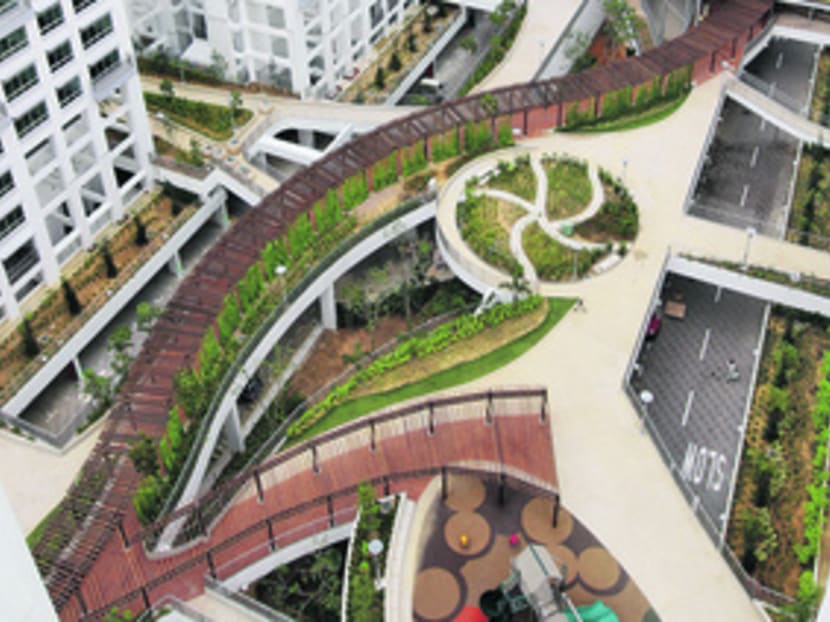Eco living is the future
With rooftops decked with plants, and greenery flowing down the columns of Treelodge@Punggol flats, Mr Jackson Yeo, 32, said: “We don’t feel like it is a concrete structure that is dead and cold. Taxi drivers always say it looks like a condo.”
With rooftops decked with plants, and greenery flowing down the columns of Treelodge@Punggol flats, Mr Jackson Yeo, 32, said: “We don’t feel like it is a concrete structure that is dead and cold. Taxi drivers always say it looks like a condo.”
The first-of-its-kind eco-precinct provides a peek into the possible future — a more sustainable, energy-efficient one — for public housing in Singapore.
The flats at the BTO development are designed with a north-south orientation and rooftop greenery, to reduce heat gain, while blocks are spaced and designed to optimise wind flow.
Solar panels tap clean energy to power the common areas; the kinetic energy of moving lifts is used to generate electricity; and all the homes have water-saving fittings. Each block also has an extra rubbish chute dedicated for recyclables.
On a bigger scale, similar environmentally-friendly ideas are being test-bedded across the Punggol Eco-town “living laboratory”, with a view to implementing some of these islandwide eventually under the HDB’s Greenprint programme.
New developments in Dawson estate, for instance, will sport many of these features.
While new Punggol’s greatest attention-grabber has been its picturesque and award-winning man-made waterway, it is less-visible experiments — like a rainwater harvesting system for the washing of common areas and solar power — that have import for all future HDB dwellers.
Recently, the HDB awarded a tender to lease solar photovoltaic systems for another 80 blocks in Punggol, which will generate power for lifts, staircase lightings and water pumps. (Already, this second batch of installations cost some S$2 million less than the first batch the HDB leased for the area in 2011.)
The hope is for a mitigating effect on service and conservancy charges.
“Eventually, through the implementation of these green technologies, the HDB hopes to keep energy costs low for residents,” said the Ministry of National Development.
Meanwhile, an islandwide climatic mapping study is ongoing that looks into how the form of urban structures affect air flow and temperature.
It will help in the better design of buildings to reduce heat spots, capture cool breezes, improve natural ventilation and exploit inter-block shading — all to make homes cooler and more comfortable, and reduce residents’ urge to power up the air-conditioning.
The HDB is also test-bedding a pneumatic refuse collection system that would mean less plying of refuse trucks — and better air quality in estates with the removal of bin centres.









